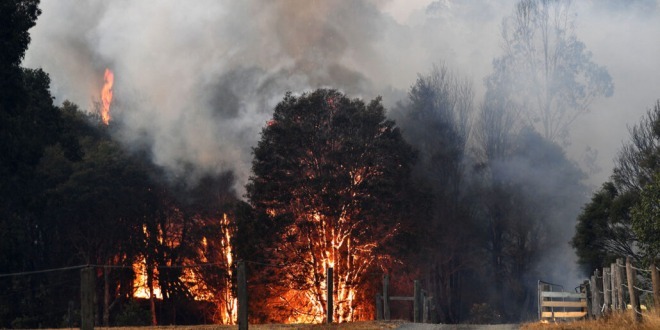According to two recent research, the severe, deadly wildfires that raged over southeastern Australia in late 2019 and early 2020 delivered a tremendous punch that reached far beyond the country.
One team’s satellite-derived assessments found that the fires spewed at least twice as much carbon dioxide into the atmosphere than previously estimated. Another research discovered that the fires produced massive clouds of smoke and ash that drifted far east across the Southern Ocean, enriching the waters with nutrients and spawning huge blooms of microscopic marine algae known as phytoplankton. Both studies were published in Nature on September 15th.
Carbon monoxide data collected over southeastern Australia by the satellite-based instrument TROPOMI from November 2019 to January 2020, during the worst of the fires, was examined first by meteorologist Ivar van der Velde of the SRON Netherlands Institute for Space Research in Leiden and colleagues. The team then used previously determined ratios of carbon monoxide to carbon dioxide emitted by the region’s eucalyptus forests — the predominant type of forest scorched in the blazes — during previous wildfires and prescribed burns to get new estimates of the carbon dioxide emissions attributable to the fires.
The flames, according to Van der Velde’s research, released between 517 trillion and 867 trillion grams of carbon dioxide into the sky. “The sheer amount of CO2 discharged to the atmosphere… was far larger than we previously thought,” van der Velde says. The emissions “were much higher than what all Australians ordinarily generate with the combustion of fossil fuels in a full year,” according to the report.
Based on estimates of burned area and biomass consumed by the flames, previous estimates of CO2 emissions from the fires averaged around 275 trillion grams. The researchers claim that using satellite-derived carbon monoxide data enhances the capacity to separate actual emissions from other background sources of the gases, resulting in a more accurate assessment.
This finding has alarming ramifications. The fires ripped a gash through southeastern Australia’s eucalyptus forests, destroying them to the point where rapid regeneration is difficult, limiting how much carbon the trees can absorb, according to van der Velde (SN: 3/9/21). Fires in the dry, grassy savannas of northern and central Australia are considered as more climate neutral because the grasses can regenerate more quickly, he claims.
With further climate change, major fire seasons are projected to become more prevalent in southeastern Australia. The chance of major fire outbreaks like the 2019–2020 fire season has already increased by at least 30% due to climate change (SN: 3/4/20).
The fires’ smoke and ash had a tremendous impact as well. From December 29 to December 31, 2019, scientists watched in awe as the fires produced a “super outbreak” of towering thunderclouds (SN: 12/15/20). These clouds shot microscopic ash and smoke aerosol particles into the stratosphere.
The fires’ aerosols also moved eastward through the lower atmosphere, eventually reaching the Southern Ocean, where they induced phytoplankton blooms in its iron-depleted waters. Weiyi Tang, a geochemist currently at Princeton University, and colleagues examined aerosols from the fires and discovered that the particles were high in iron, which is a critical nutrient for algae. The researchers was able to link the reported blooms — enormous patches of chlorophyll identified by satellite — to the fires by following the air routes of the cloud of ash and smoke over the ocean.

